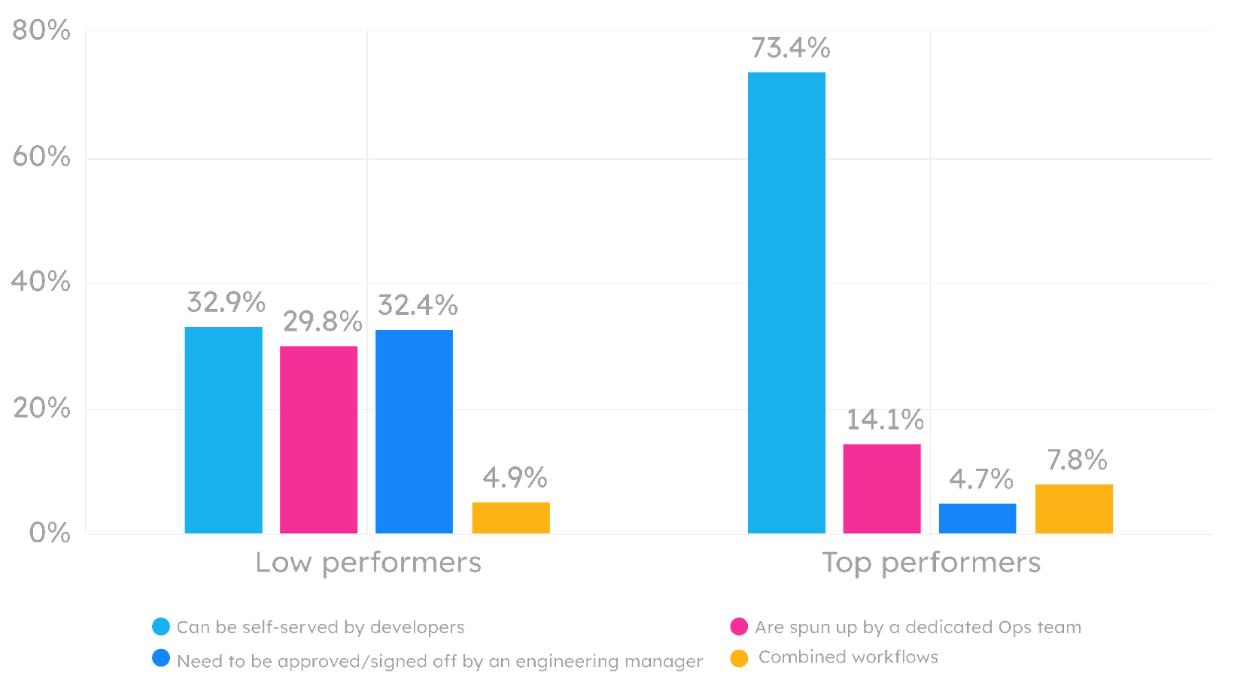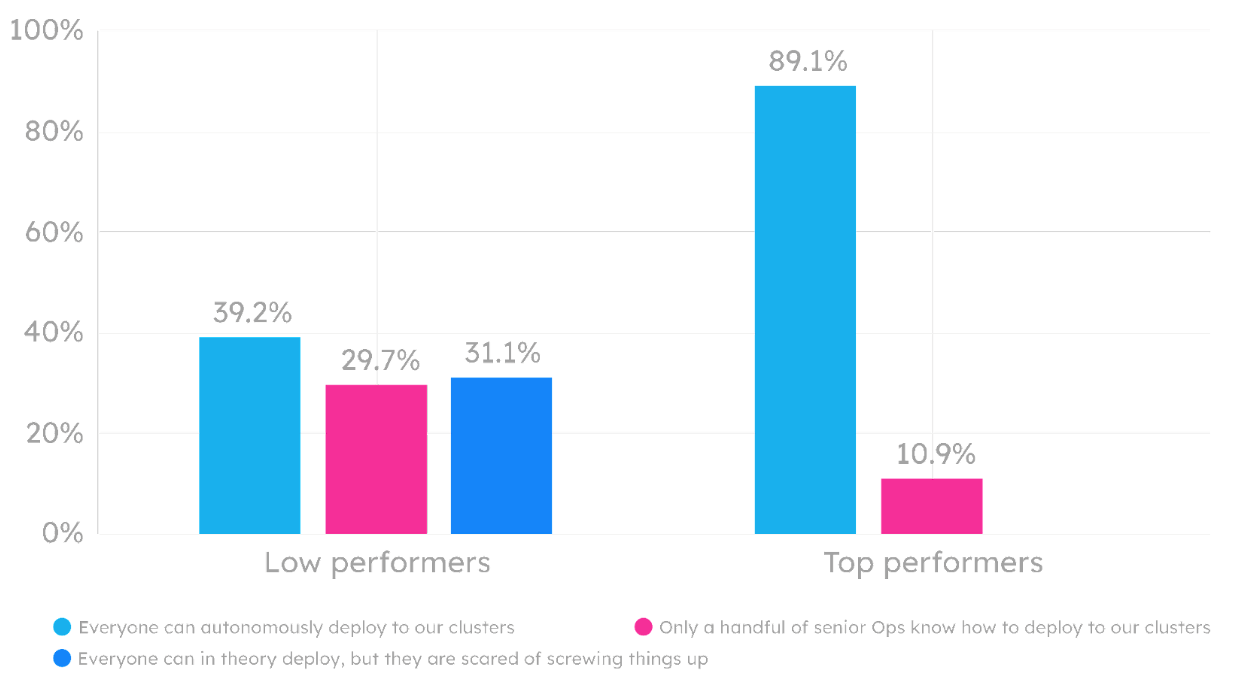Adopting Kubernetes? Here Are Some Pitfalls You Should Avoid

Think you know K8s? It's always wise to learn more – particularly when doing so contextualizes your understanding.
Knowing your way around a tool is key to putting it to good use, and this concept doesn't just apply to your weekend hobby projects. It's just as true of DevOps essentials like Kubernetes as it is of an artist's favorite brushes or a woodworker's lathe – Cultivating a thorough understanding of your systems enhances the work you produce.
...Or at least it should. Many devs barely have enough time to learn the basics of their preferred toolkits, let alone dive into the intricacies that make them enterprise-worthy. The reality is that mastering Kubernetes is no small task. Although its complexity isn't out of line for such a powerful tool, it tends to work against those trying to find their footing.
That's exactly why we created the 2022 Kubernetes Benchmarking Study. With adoption growing at a healthy pace, more teams are leveraging cloud-native workflows (but not always with the results they might expect). So my team and I spent months studying more than 1160 dev teams across the industry spectrum to benchmark their K8s setups and practices. In the process, we explored questions including:
- What distinguishes high-performance organizations' K8s usage?
- How might a team's structure, culture, and approach impact its success at wrangling K8s?
- Is there a viable path from an underperforming K8s novice to a successful containerization master?
- Is there a right way to create a future-proof K8s setup?
Our study incorporated a custom Kubernetes Performance Score or KPS. Based on their answers to our questions and a broad range of data points, we awarded organizations KPSes ranging from 0 (low performers) to 100 (high performers). We then focused our analysis on the teams that provided complete information. Although this significantly restricted the respondent pool, we felt it painted a more even-handed picture of usage in the current K8s ecosystem.
Success Takes More Than Good Intentions: Containerization Implementation and Planning Proficiency as Performance Gauges
Our work revealed many stark distinctions between low- and high-performers. One of the most poignant lay in the realm of implementation: More than 66 percent of top-performing leaders had containerized all of their services, whereas just above 22 percent of low performers followed suit.
The same trends held for Kubernetes adoption, implying that getting comfortable with containerization is key to making the most of K8s. This makes perfect sense because K8s is a container orchestration system, but we also heard a couple of other common refrains when it came to pushing successful K8s migrations forward:
- Underestimating the complexity of K8s: Both high- and low-performers alike experienced this one, with minimal differences between the two groups. So it might pay to take a training deep dive before you start spinning up clusters or shopping for cloud providers.
- Having unrealistic or inaccurate expectations before adoption: Many would-be adopters ran into problems like discovering K8s were tough to use – or at least harder than they thought it would be. Others found they saved less money than they anticipated or got tripped up by cloud service incompatibilities along the way.
In short, you'll likely be better off if you stay firmly grounded. K8s can solve many problems, but only with appropriate planning and, importantly, a willingness to commit to containerization at large.
The Technical Hurdles: Security, Team Management, and Degree of Developer Self-Service
One interesting thing we discovered was that a few common technical hurdles repeatedly reared their heads during K8s migrations. Your mileage may vary, but you should keep these potential challenges in mind while considering adoption:
Implementing Appropriate Security Is Harder Than It Looks
K8s security was an important topic for more than 70 percent of respondents, but that didn't mean they all handled it properly. Although all the leaders used secret management tools, a significant chunk of the low-performers committed some serious faux pas. For instance, many stored plaintext secrets in their repos applied changes manually or failed to separate environment-specific and environment-agnostic configs. In addition, some lacked a clear vision of what constituted best practices.
Unfit Organizational Cultures Might Bring Kubernetes Migrations to a Halt
Migrating to K8s can be an enormous cultural shift. But, as with most such changes, these transitions seemed to pan out better when they happened from the top down.

By contrast, low performers commonly made the mistake of disseminating K8s knowledge on a need-to-know basis, introducing key-individual dependencies that might later become major weaknesses. Compared to high performers, low scorers also failed to document and visualize their setups accurately. They also spent less time onboarding devs on K8s.
Self-Service Needs to Serve Devs Better
Self-service was another huge delineating factor. Although almost 90 percent of top performers claimed their devs could deploy independently or on-demand, only 39 percent of low-performers said the same.

Worryingly, more than 31 percent of low performers felt that most of their team members were too scared to deploy to K8s clusters for fear of breaking something! This doesn't bode well from an organizational standpoint, but it poses even more of a potential problem with containerized operations than it might in other areas. Centralized workflows that hinge on human resource bottlenecks negate some of the primary benefits of containerization, like being able to work autonomously and provision infrastructure rapidly.
Moving Past the Pain Points
So how do teams go about improving their K8s performance? We found that the majority of successful rollouts existed within the framework of larger Internal Developer Platforms (IDP) built by platform engineering teams. In other words, high-performers build the tools, support systems, and infrastructures that empower their developers to self-service effectively.
This should come as no surprise; our 2022 benchmarking report wasn't the first study to correlate DevOps proficiency with self-service capable internal platforms (for instance, check out Puppet's State of DevOps Report 2021 or Humanitec's DevOps Benchmarking Study 2021).
At the same time, we'd be remiss not to point out that effective developer ecosystems must strive for holistic ideals. Effective IDPs enforce standardization and best practices by default. In the process, they let devs interact with K8s while avoiding the pitfalls of its undeniable complexities. This way, they minimize your dev teams' cognitive load, freeing them to focus on the important stuff.
Put Your Best Foot Forward By Learning More
K8s is a complex yet powerful system that might improve your teams' operations. The question is whether you're prepared to make an effort required to master it – and build the framework for a successful migration journey before taking those crucial first steps.
In the broader scheme of things, Kubernetes is just a starting point. It can't serve as your entire developer platform by itself, but it can be a solid foundation for your platform engineering initiative.
We Provide consulting, implementation, and management services on DevOps, DevSecOps, Cloud, Automated Ops, Microservices, Infrastructure, and Security
Services offered by us: https://www.zippyops.com/services
Our Products: https://www.zippyops.com/products
Our Solutions: https://www.zippyops.com/solutions
For Demo, videos check out YouTube Playlist: https://www.youtube.com/watch?v=4FYvPooN_Tg&list=PLCJ3JpanNyCfXlHahZhYgJH9-rV6ouPro
If this seems interesting, please email us at [email protected] for a call.
Recent Comments
No comments
Leave a Comment
We will be happy to hear what you think about this post